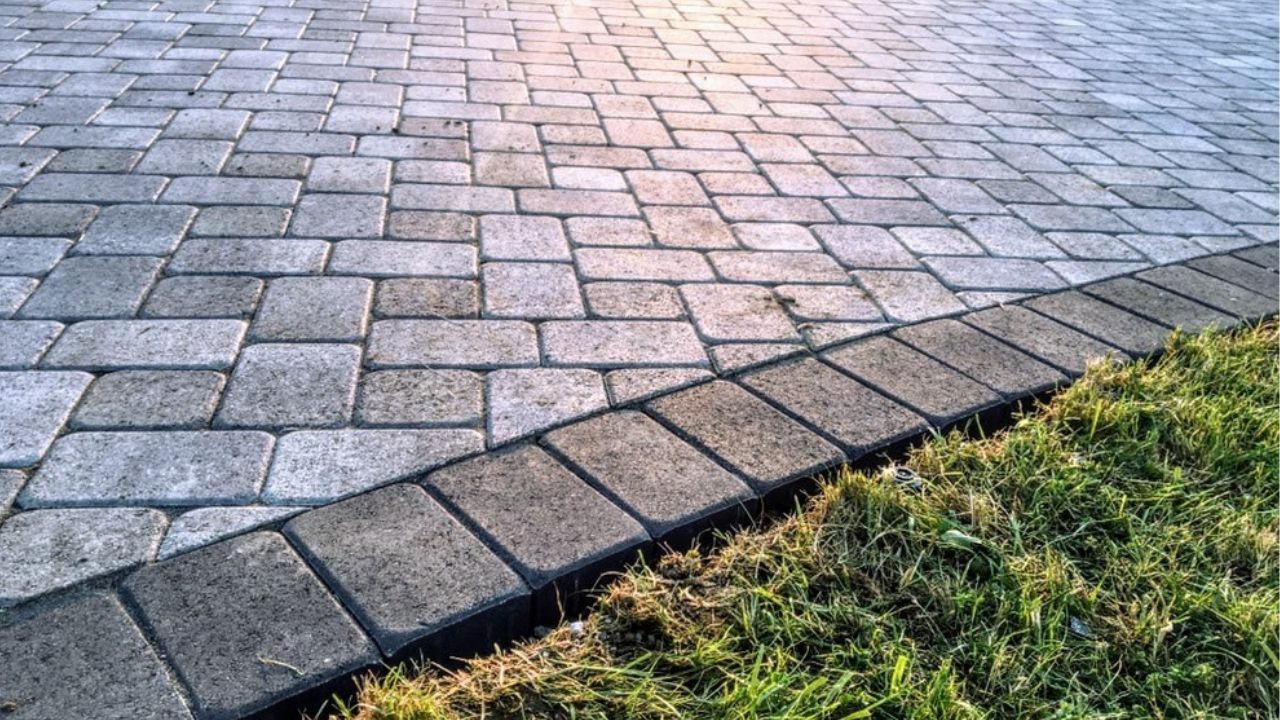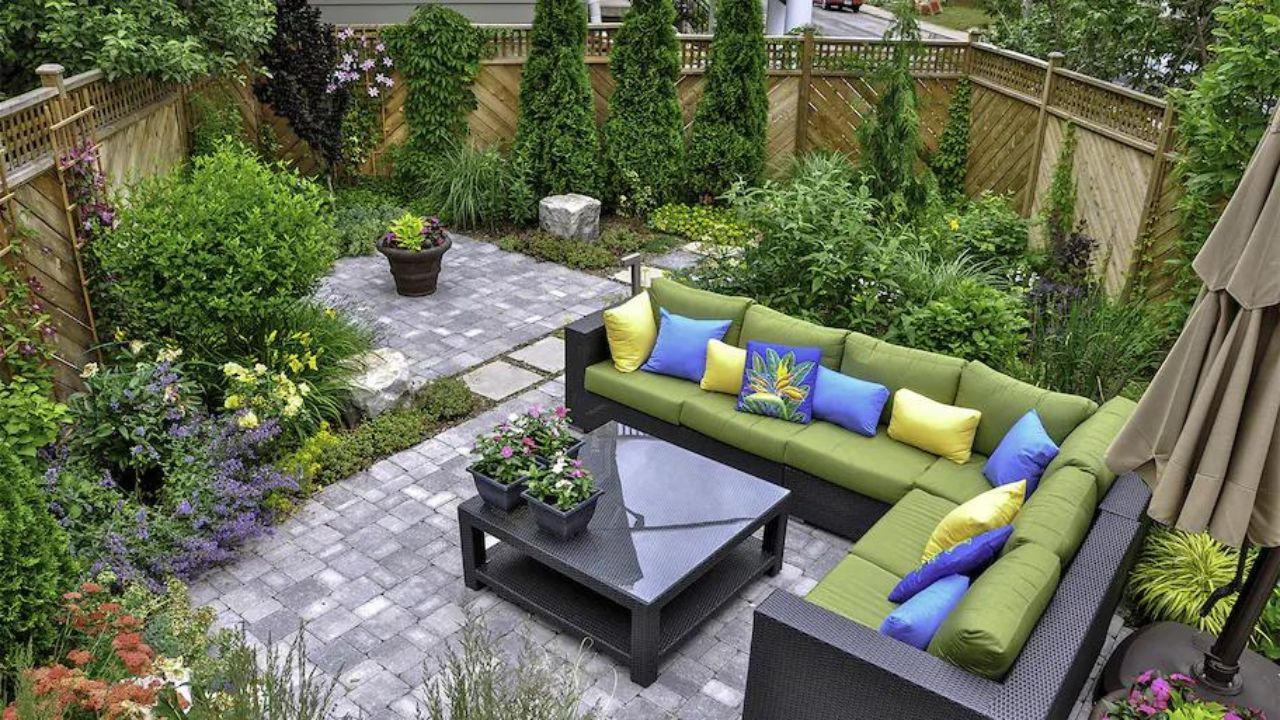Advantages of Permeable Paver Systems
Discover the myriad benefits and ingenious functionality behind permeable paver systems in modern hardscaping. These innovative solutions offer more than just a visually appealing pavement; they revolutionize water management. By allowing rainwater to seep through the surface and into the ground, permeable paver systems mitigate runoff, reduce flooding risks, and recharge groundwater. Uncover how these sustainable alternatives not only contribute to eco-friendly landscaping but also enhance durability and longevity. Explore the versatile designs and eco-conscious advantages that make permeable paver systems a smart choice for your next outdoor project.
Understanding Permeable Paver Systems
Exploring Sustainable Paving Solutions
Permeable paver systems represent a breakthrough in sustainable paving solutions. Unlike traditional pavements that contribute to runoff and flooding, permeable pavers offer an eco-friendly alternative. By allowing rainwater to infiltrate the surface and replenish the groundwater, these systems effectively manage stormwater.
Their environmental advantages extend beyond water management – they also filter pollutants and improve water quality as it seeps through. What’s remarkable is that these benefits don’t come at the expense of design and functionality.
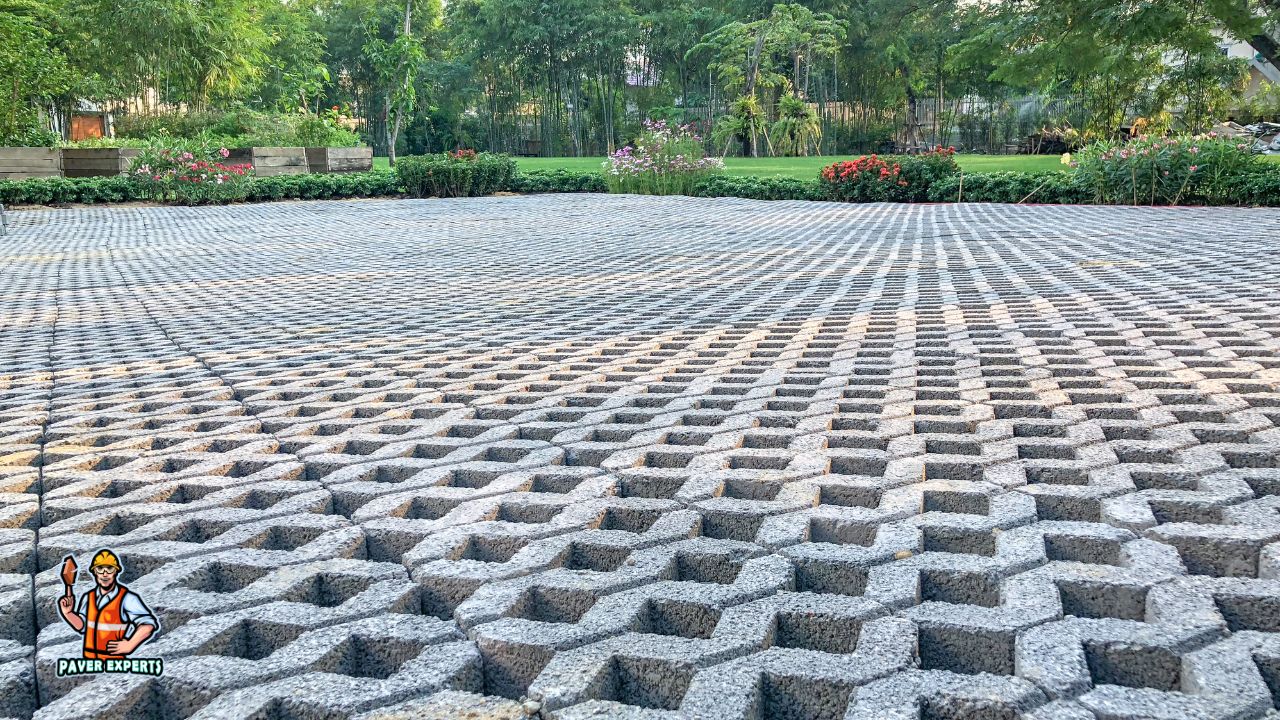
With a range of sizes, shapes, and colors available, permeable pavers can be seamlessly incorporated into various hardscaping designs. Although installation might be more involved, the long-term advantages make it worthwhile.
Frequently Asked Questions
The right paver color depends on factors like your landscape’s existing colors, architectural style, personal preferences, and the mood you want to create. Observing your surroundings and seeking inspiration from nature can guide your decision.
Absolutely! Mixing paver colors to create patterns adds depth and visual interest to your space. Combining colors strategically can result in unique and eye-catching designs that reflect your style.
While it’s not necessary to match exactly, choosing paver colors that complement your home’s architectural style can create a cohesive look. Neutrals often work well with various styles, while bolder colors can accentuate modern designs.
Paver colors can appear different in various lighting conditions. Consider your local climate—bright sunlight can make colors appear more intense, while shade can make them appear darker. Test samples in different lighting to observe these effects.
Yes, adapting paver colors to different seasons is a creative approach. Choosing colors that align with each season’s natural palette can create a harmonious connection between your outdoor space and nature’s changes.
If you’re unsure, seek advice from landscaping professionals or designers. They can provide insights based on their experience and help you make a decision that suits your landscape and design goals.
Benefits of Permeable Pavers
A Greener Approach to Hardscaping
In the quest for sustainable and environmentally conscious solutions, permeable pavers have emerged as a game-changer in the field of hardscaping. These innovative paving materials offer a plethora of benefits that not only enhance the visual appeal of outdoor spaces but also contribute to a more eco-friendly approach to landscaping.
Managing Rainwater Responsibly
One of the primary advantages of permeable pavers is their ability to manage rainwater in a responsible and efficient manner. Traditional impermeable surfaces, such as asphalt and concrete, can lead to stormwater runoff, causing erosion, flooding, and overburdened drainage systems. Permeable pavers, on the other hand, allow rainwater to infiltrate through the surface and percolate into the ground, replenishing the groundwater table. This natural infiltration process helps reduce the strain on municipal sewer systems and mitigates the risk of flooding in urban areas.
Preventing Pollution Through Filtration
Permeable pavers go beyond managing water – they actively contribute to the improvement of water quality. As rainwater passes through the permeable surface, it undergoes a natural filtration process. The paver system captures pollutants, sediments, and contaminants, preventing them from reaching local water bodies. This means that the water that eventually makes its way into rivers, lakes, and oceans is cleaner and less harmful to aquatic ecosystems.
Combining Functionality and Aesthetics
While the environmental benefits of permeable pavers are undeniable, they also offer an array of design options and aesthetic possibilities. These pavers come in various shapes, sizes, and colors, allowing for creative and visually appealing hardscape designs. Whether it’s a permeable paver driveway, walkway, or patio, the design possibilities are virtually limitless. This integration of functionality and aesthetics means that you don’t have to compromise on visual appeal to achieve environmental goals.
Installation and Maintenance
Installing permeable pavers does require a bit more planning and attention to detail compared to traditional pavers. Proper sub-base preparation is crucial to ensure effective water infiltration and drainage. However, the extra effort during installation pays off in the long run with reduced maintenance requirements. Periodic sweeping and vacuuming to remove debris is typically all that’s needed to keep the permeable paver system in optimal condition.
Want to add value to your property? Choose our professional paver installation services for a high-quality upgrade that will last for years to come.
How Do Permeable Pavers Work?
A Deep Dive into Drainage and Water Management
Permeable pavers, a modern innovation in hardscaping, operate on a simple yet ingenious principle that revolutionizes how we manage rainwater and mitigate the effects of urban runoff. In this exploration, we delve into the mechanics behind permeable pavers, uncovering the intricacies of their drainage systems and the role they play in effective water management.
Paving with Purpose
Unlike traditional impermeable surfaces, such as asphalt or concrete, which force rainwater to flow over the top, permeable pavers are designed to absorb water. They consist of specially designed units with gaps or voids that allow rainwater to infiltrate the surface and percolate into the ground beneath. This design turns what was once seen as runoff into a valuable resource that recharges groundwater and supports ecosystem health.
The Sub-base Solution
At the core of permeable paver systems lies a well-engineered sub-base. This layer, often made up of crushed stone or aggregate, facilitates efficient water movement. Rainwater that flows through the gaps in the pavers is directed towards this sub-base, where it is temporarily stored. From there, the water either infiltrates the surrounding soil naturally or is slowly released into the municipal drainage system.
Managing Rainfall Intensity
Permeable pavers shine in managing sudden and heavy rainfall. When faced with intense downpours, impermeable surfaces often result in rapid runoff, leading to erosion and flooding. Permeable pavers, however, absorb a significant portion of the rainwater, slowing its movement and reducing the strain on stormwater systems. This, in turn, minimizes the risk of localized flooding and helps maintain the integrity of surrounding landscapes.
Filtering and Purification
A remarkable aspect of permeable paver systems is their capacity to improve water quality. As rainwater percolates through the paver surface and sub-base, natural processes filter out pollutants, sediments, and contaminants. By the time the water reaches the underlying soil or drainage system, it’s significantly cleaner than if it had run over an impermeable surface, benefiting both the environment and local water bodies.
A Sustainable Future Underfoot
Permeable pavers epitomize the marriage of innovation and sustainability. By allowing rainwater to infiltrate the ground, they help replenish groundwater, reduce flooding risks, and mitigate the environmental impact of urban development. As cities continue to grapple with stormwater management and ecological preservation, permeable pavers offer a promising solution that exemplifies the potential of modern hardscaping to contribute positively to the challenges of our time.
Choosing the Right Permeable Paver Design
Balancing Aesthetics and Functionality
When it comes to incorporating permeable pavers into your hardscaping project, the design options are as diverse as they are exciting. Striking the perfect balance between aesthetics and functionality is key to creating an outdoor space that not only looks visually appealing but also serves its intended purpose effectively. In this exploration, we delve into the considerations that go into choosing the ideal permeable paver design.
Harmonizing with the Landscape
The first step in selecting a permeable paver design is to consider the existing landscape. Whether it’s a driveway, walkway, patio, or plaza, the design should complement the natural surroundings and architectural elements. This integration creates a harmonious flow between the built environment and the outdoor space, enhancing the overall aesthetic appeal.
Creative Patterning and Layout
Permeable pavers offer an array of creative possibilities in terms of patterns and layouts. From classic herringbone and basketweave to more intricate designs, the pattern you choose can make a significant visual impact. However, the functionality should not be compromised. The pattern should allow for efficient water infiltration and drainage while maintaining stability underfoot.
Material Selection and Texture
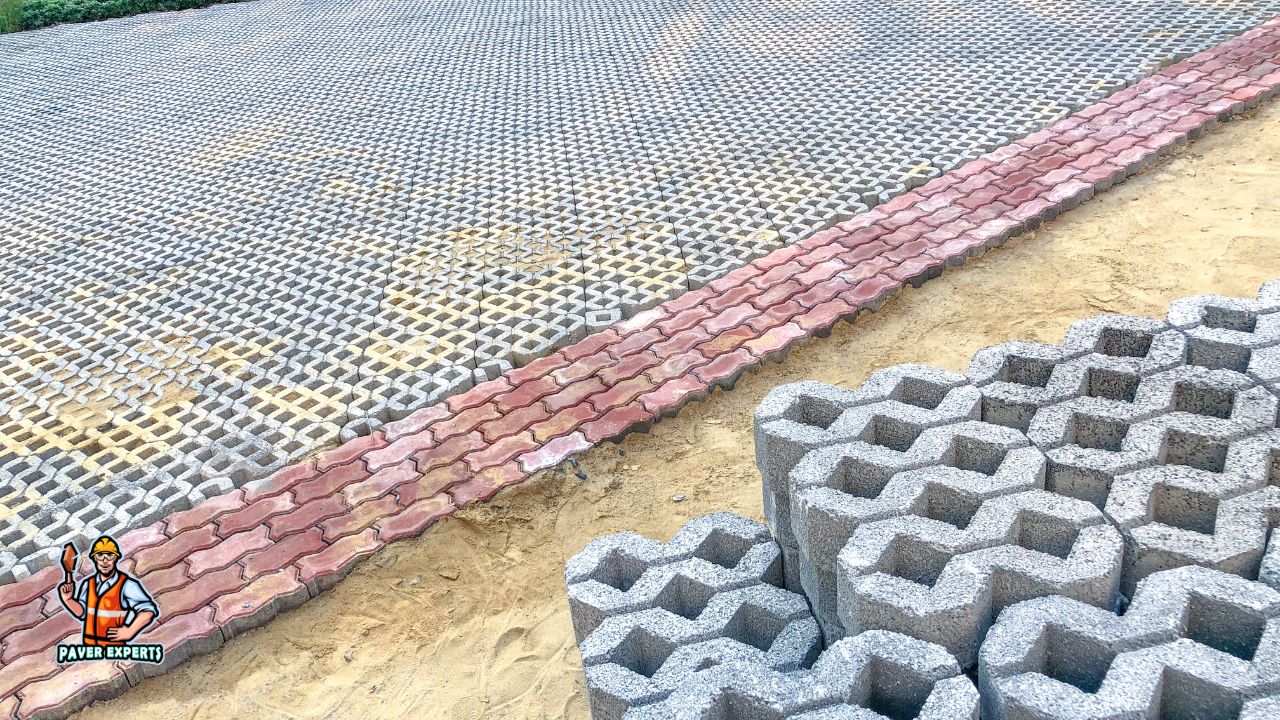
Permeable pavers come in various materials, including concrete, clay, and natural stone. Each material brings its own unique texture and aesthetic qualities. The texture is a crucial consideration, especially for surfaces that are likely to be walked on frequently. It’s important to strike a balance between a visually appealing texture and one that offers adequate traction and comfort.
Color Palette and Visual Cohesion
The color palette of the permeable pavers should align with the overall design theme of your outdoor space. Whether you’re aiming for a rustic look, a modern feel, or something in between, the colors should contribute to a unified and cohesive visual experience. It’s advisable to choose colors that won’t fade over time, ensuring the longevity of the design.
Functionality and Practicality
While aesthetics are important, the functionality of the permeable paver design should never be overlooked. Consider how the space will be used. If it’s a driveway, ensure that the design can withstand vehicular traffic without compromising water infiltration. Walkways and patios should offer a comfortable and stable surface for pedestrians.
Step-by-Step Installation Guide
Building Your Own Permeable Paver Pathway
Creating a permeable paver pathway not only adds charm to your outdoor space but also contributes to responsible water management. This step-by-step guide will walk you through the process of building your own permeable paver pathway, from planning to completion.
Planning and Preparation
- Determine the location of your pathway and mark its boundaries.
- Consider the slope of the land and ensure proper drainage away from structures.
- Calculate the amount of pavers and base materials needed based on the pathway dimensions.
Gather Materials and Tools
- Permeable pavers of your choice.
- Permeable aggregate base material.
- Geotextile fabric.
- Edge restraints.
- Hand tamper or plate compactor.
- Shovels, rakes, and a wheelbarrow.
- Crushed stone for the sub-base.
Excavation
- Dig out the area for the pathway to a depth that accommodates the permeable paver thickness, base material, and sub-base.
- Ensure a consistent depth and level surface.
Installing Sub-Base
- Add a layer of crushed stone as the sub-base. Compact it thoroughly with a tamper or plate compactor to create a stable foundation.
- Lay a geotextile fabric over the compacted stone to prevent soil from mixing with the base material.
Adding Base Material
- Spread the permeable aggregate base material over the geotextile fabric.
- Rake and level the base material to the desired thickness, ensuring uniformity across the pathway.
Compacting Base Material
Use a plate compactor to compact the base material in layers. This creates a solid and even surface that will support the permeable pavers.
Installing Edge Restraints
Install edge restraints along the sides of the pathway to prevent pavers from shifting over time. Secure them firmly in place.
Laying Permeable Pavers
- Begin laying the permeable pavers in your chosen pattern, starting from one corner.
- Gently tap each paver into place with a rubber mallet to ensure they are level and secure.
Cutting and Filling
- Use a paver saw or chisel to cut pavers to fit at the edges and corners.
- Fill gaps between pavers with joint sand to enhance stability and prevent weed growth.
Final Compaction and Sanding
- Run the plate compactor over the paver surface to settle the pavers and sand into the joints.
- Add more joint sand and repeat the compaction process until the joints are adequately filled.
Enjoy Your Permeable Paver Pathway
- Sweep away excess joint sand and hose down the pavers to set the sand in the joints.
- Your permeable paver pathway is now ready to be used and admired!
By following these step-by-step instructions, you can build a stunning and environmentally-friendly permeable paver pathway that not only enhances your outdoor space but also contributes to sustainable water management.
Maintaining Permeable Paver Surfaces
Tips for Longevity and Optimal Performance
Maintaining the longevity and optimal performance of your permeable paver surfaces is crucial to both their functionality and aesthetic appeal. Regular cleaning is a fundamental practice, involving sweeping to clear away debris that can obstruct water drainage. Controlling weed growth is essential, and applying polymeric sand to the joints can prevent weeds from taking root and compromising the surface’s integrity. Monitoring for settling or unevenness is important, as the base material may shift over time. To combat this, periodically inspect and level the surface as needed. Maintaining proper joint sand levels is key to stability and appearance, and annual replenishment should be part of your routine.
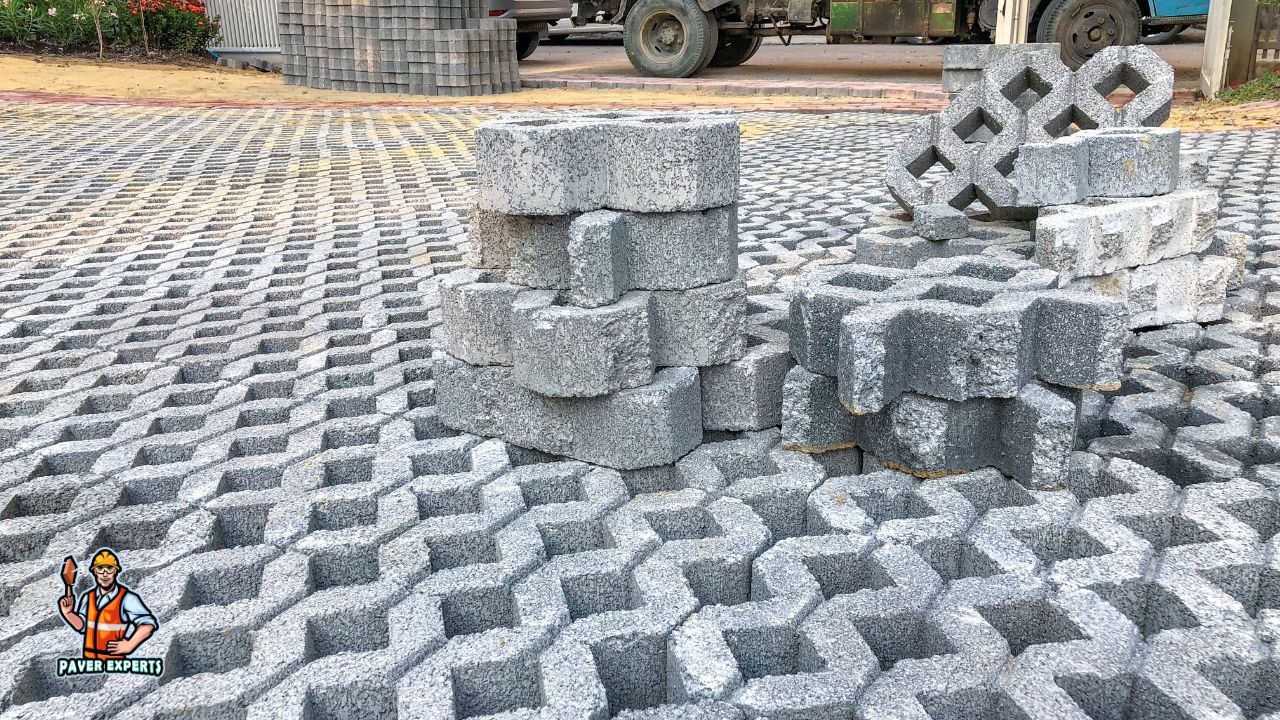
In case of stains, address them promptly using absorbent materials and mild cleaning agents. Professional maintenance every few years can provide a comprehensive assessment, ensuring your permeable paver surface remains effective and attractive. By following these maintenance guidelines, you contribute to sustainable water management while enjoying a durable and visually pleasing outdoor space.
Comparing Permeable Pavers to Traditional Options
Why Consider the Sustainable Alternative
When it comes to paving solutions for outdoor spaces, the choice between traditional impermeable surfaces and permeable pavers holds significant implications for both the environment and the overall performance of the area. This comparison sheds light on the advantages of opting for permeable pavers – a sustainable alternative that offers a range of benefits.
Water Management Efficiency
Permeable pavers shine in their ability to manage rainwater efficiently. Unlike impermeable surfaces that contribute to runoff and flooding, permeable pavers allow rainwater to infiltrate through the surface and recharge the groundwater. This reduces strain on drainage systems and helps mitigate the risk of flooding, especially in urban environments prone to heavy rainfall.
Pollution Prevention and Water Quality
Permeable pavers excel in their role as natural water filters. As rainwater passes through the paver system, pollutants and contaminants are captured and prevented from entering local water bodies. This results in improved water quality and a reduced impact on aquatic ecosystems. Traditional surfaces, on the other hand, contribute to runoff that can carry pollutants directly into waterways.
Erosion Prevention and Soil Health
Impermeable surfaces can contribute to soil erosion due to the rapid runoff they create. Permeable pavers, with their water absorption capabilities, reduce erosion by allowing water to infiltrate and slow down. This, in turn, promotes soil health and prevents the loss of valuable topsoil.
Versatility and Aesthetics
Permeable pavers offer a wide range of design options, making them a versatile choice for various outdoor spaces. Whether you’re aiming for a rustic feel, a contemporary look, or anything in between, permeable pavers can be tailored to match your aesthetic preferences while maintaining their functionality.
Heat Island Effect Mitigation
Impermeable surfaces absorb and retain heat, contributing to the urban heat island effect. Permeable pavers, however, absorb less heat due to their ability to drain water and allow for soil contact. This mitigates the heat island effect, contributing to a more comfortable and cooler environment.
Environmental Regulations Compliance
In many areas, regulatory requirements are shifting towards more sustainable land development practices. Permeable pavers align with these regulations, making them a future-proof choice that helps you meet environmental compliance standards.
Future of Permeable Paver Technology
Innovations and Trends in Eco-Friendly Hardscaping
The evolution of permeable paver technology is paving the way for a more sustainable and environmentally conscious approach to hardscaping. As the world grapples with urbanization, climate change, and the need for responsible land development, innovations in permeable paver systems are poised to reshape the future of outdoor spaces. Here, we explore the exciting trends and advancements that promise to revolutionize eco-friendly hardscaping.
Smart Water Management
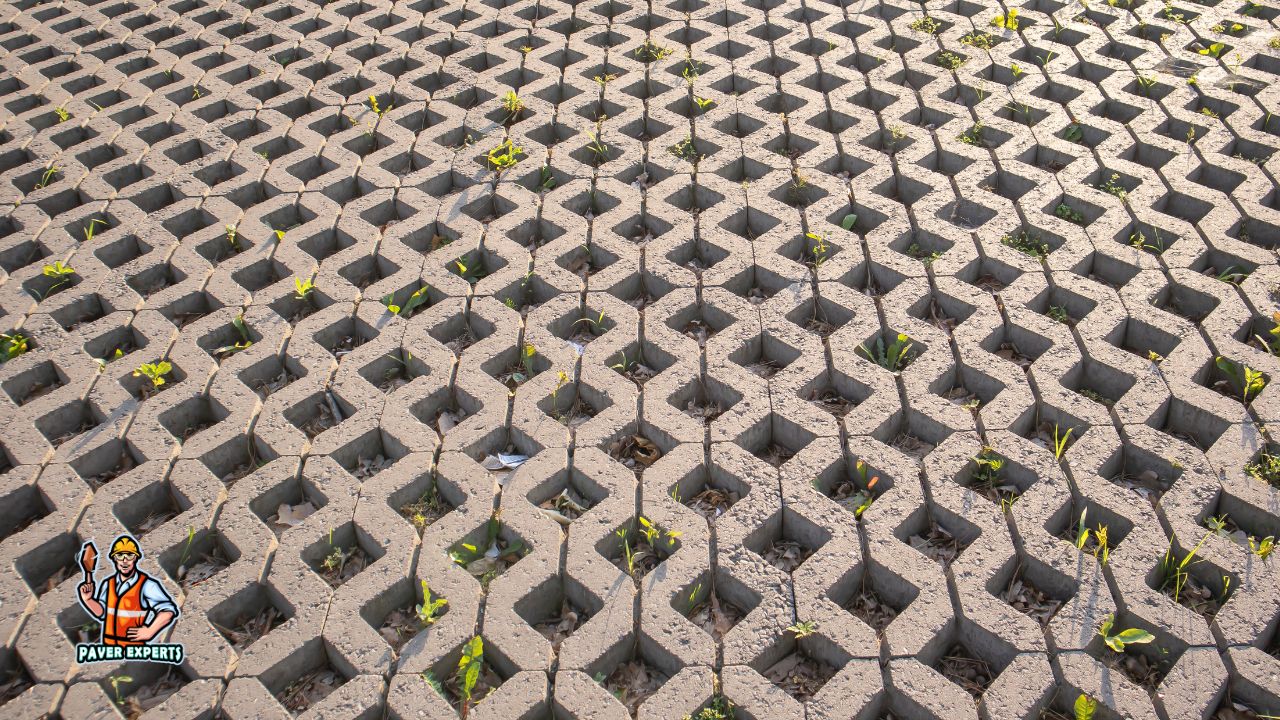
The future of permeable paver technology lies in enhancing water management capabilities. Smart sensors and integrated systems could monitor water flow, detect potential clogs, and optimize drainage efficiency. These innovations not only maximize the permeable pavers’ stormwater management potential but also provide real-time data for adaptive design and maintenance.
High-Performance Materials
Research and development efforts are focused on creating permeable pavers from advanced materials that combine strength, durability, and enhanced water permeability. New composite materials and innovative designs are likely to result in pavers that are both resilient and highly effective in managing water.
Hybrid Solutions
The future may see the integration of different sustainable elements within permeable paver systems. Green infrastructure elements like native plant beds or bioswales could be seamlessly incorporated, enhancing the environmental impact of the paver surfaces while creating attractive and functional landscapes.
Artistic Paver Design
Advancements in manufacturing techniques are enabling more intricate and artistic designs for permeable pavers. These pavers won’t just be functional – they’ll be true works of art that contribute to both the aesthetic and ecological aspects of outdoor spaces.
Urban Heat Island Mitigation
In response to the urban heat island effect, future permeable pavers could incorporate cooling technologies. Innovative materials that reflect more sunlight and absorb less heat, combined with efficient water management, could help reduce the heat generated by impermeable surfaces.
Data-Driven Design and Analysis
Digital tools and simulations are becoming increasingly integral to landscape design. The future of permeable paver technology may involve using these tools to model water flow, predict performance, and optimize designs before installation, ensuring maximum efficiency and effectiveness.
Mainstream Adoption
As awareness of the environmental benefits grows, permeable pavers are likely to become a mainstream choice in hardscaping. Building codes, regulations, and incentives may evolve to encourage the adoption of these sustainable solutions, making them a standard feature in urban and residential development.
Conclusion
The exploration of permeable paver systems highlights their revolutionary potential in sustainable hardscaping. These systems, designed to manage rainwater, mitigate runoff, and enhance water quality, exemplify a harmonious blend of function and aesthetics. With benefits spanning flood prevention, pollution reduction, and groundwater replenishment, permeable pavers offer a tangible solution for environmentally responsible urban development. As we embrace their versatility and ecological advantages, we pave the way for a greener and more resilient tomorrow.
Let Us Help Our Paver Contractors
Check out the video
Service Locations
SERVICE AREA
Serving Our Community
TESTIMONIALS
What Our Customers Say








